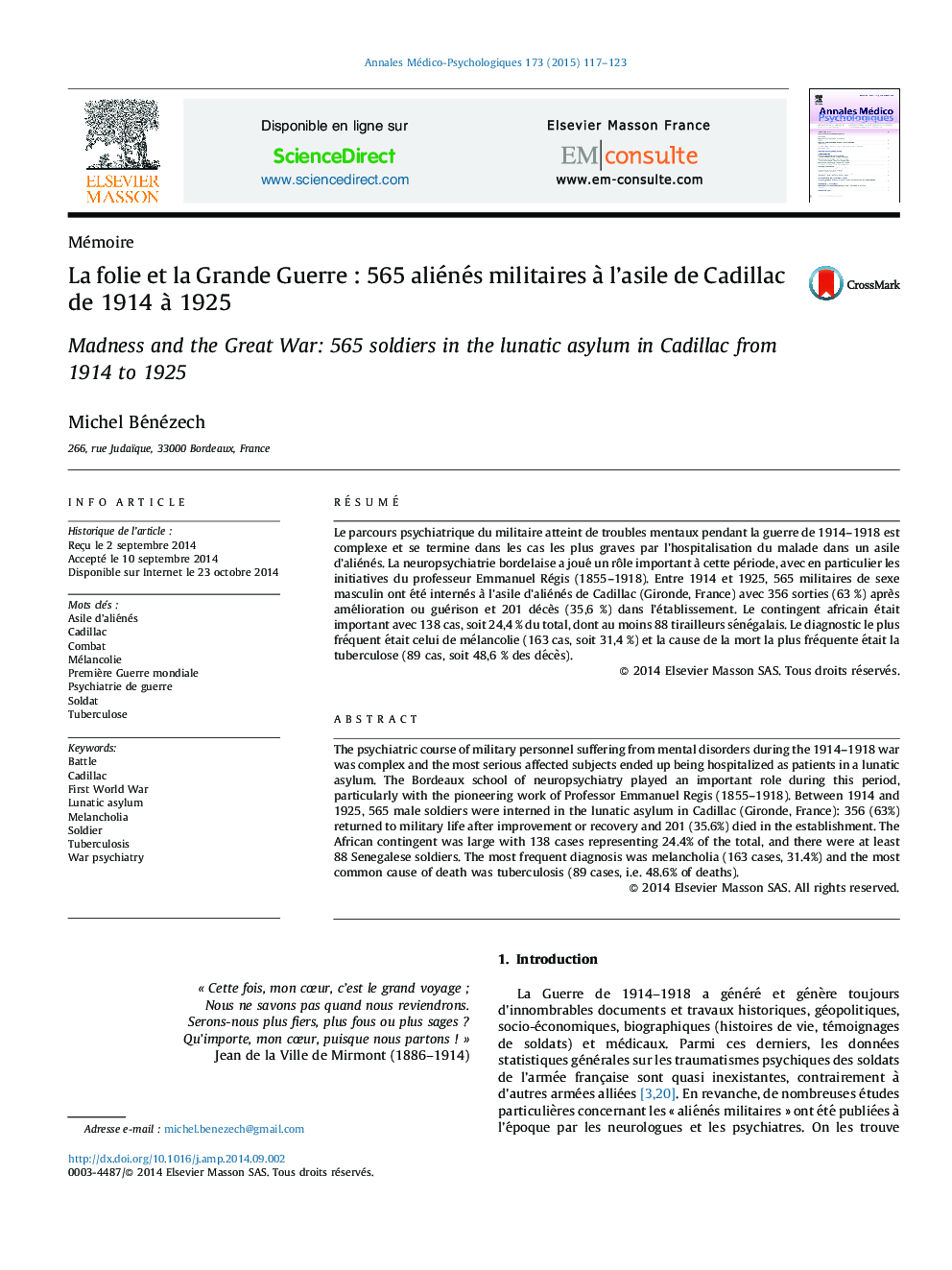| Article ID | Journal | Published Year | Pages | File Type |
|---|---|---|---|---|
| 314772 | Annales Mdico-psychologiques, revue psychiatrique | 2015 | 7 Pages |
RésuméLe parcours psychiatrique du militaire atteint de troubles mentaux pendant la guerre de 1914–1918 est complexe et se termine dans les cas les plus graves par l’hospitalisation du malade dans un asile d’aliénés. La neuropsychiatrie bordelaise a joué un rôle important à cette période, avec en particulier les initiatives du professeur Emmanuel Régis (1855–1918). Entre 1914 et 1925, 565 militaires de sexe masculin ont été internés à l’asile d’aliénés de Cadillac (Gironde, France) avec 356 sorties (63 %) après amélioration ou guérison et 201 décès (35,6 %) dans l’établissement. Le contingent africain était important avec 138 cas, soit 24,4 % du total, dont au moins 88 tirailleurs sénégalais. Le diagnostic le plus fréquent était celui de mélancolie (163 cas, soit 31,4 %) et la cause de la mort la plus fréquente était la tuberculose (89 cas, soit 48,6 % des décès).
The psychiatric course of military personnel suffering from mental disorders during the 1914–1918 war was complex and the most serious affected subjects ended up being hospitalized as patients in a lunatic asylum. The Bordeaux school of neuropsychiatry played an important role during this period, particularly with the pioneering work of Professor Emmanuel Regis (1855–1918). Between 1914 and 1925, 565 male soldiers were interned in the lunatic asylum in Cadillac (Gironde, France): 356 (63%) returned to military life after improvement or recovery and 201 (35.6%) died in the establishment. The African contingent was large with 138 cases representing 24.4% of the total, and there were at least 88 Senegalese soldiers. The most frequent diagnosis was melancholia (163 cases, 31.4%) and the most common cause of death was tuberculosis (89 cases, i.e. 48.6% of deaths).
